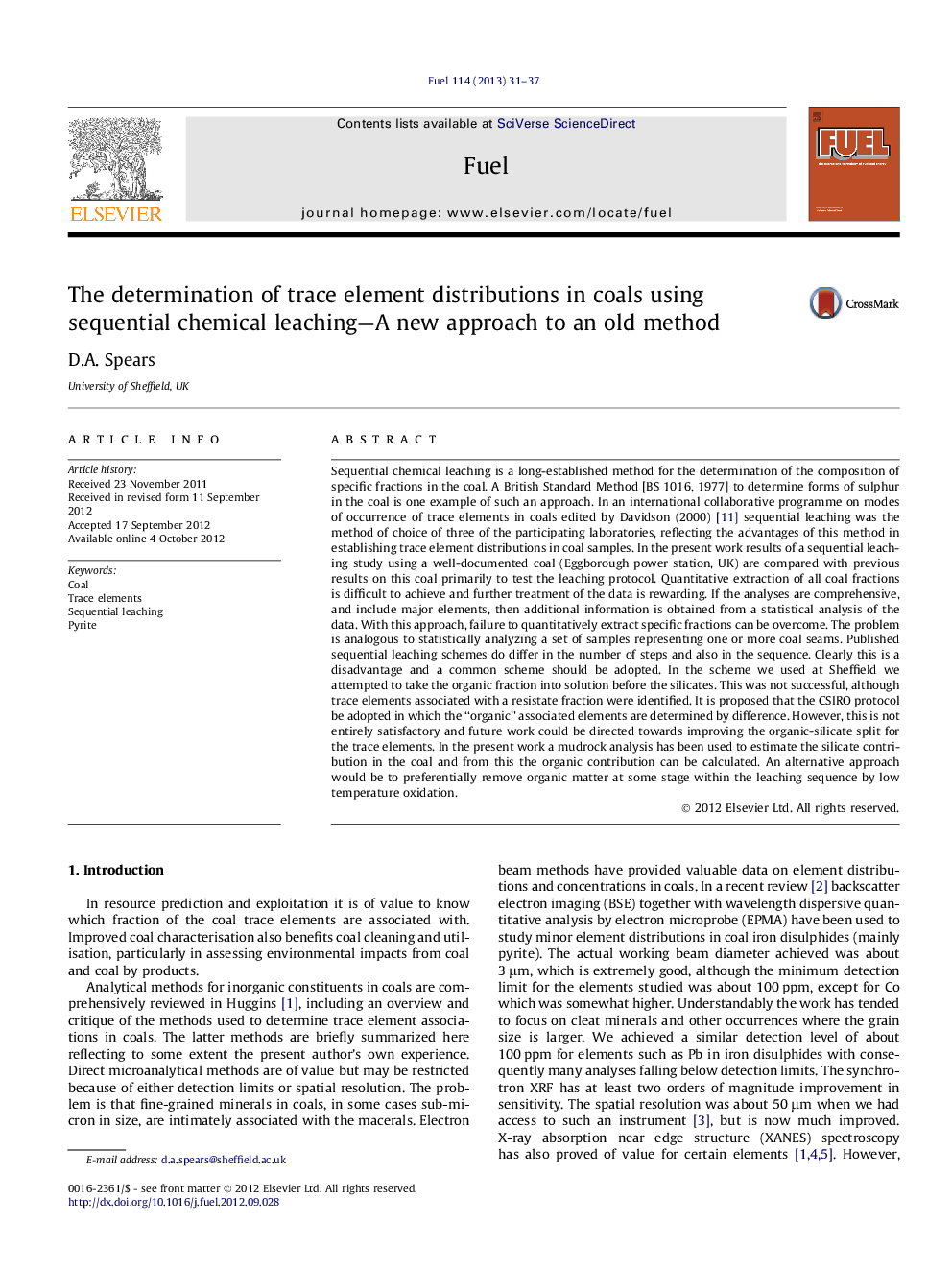| کد مقاله | کد نشریه | سال انتشار | مقاله انگلیسی | نسخه تمام متن |
|---|---|---|---|---|
| 206275 | 461161 | 2013 | 7 صفحه PDF | دانلود رایگان |

Sequential chemical leaching is a long-established method for the determination of the composition of specific fractions in the coal. A British Standard Method [BS 1016, 1977] to determine forms of sulphur in the coal is one example of such an approach. In an international collaborative programme on modes of occurrence of trace elements in coals edited by Davidson (2000) [11] sequential leaching was the method of choice of three of the participating laboratories, reflecting the advantages of this method in establishing trace element distributions in coal samples. In the present work results of a sequential leaching study using a well-documented coal (Eggborough power station, UK) are compared with previous results on this coal primarily to test the leaching protocol. Quantitative extraction of all coal fractions is difficult to achieve and further treatment of the data is rewarding. If the analyses are comprehensive, and include major elements, then additional information is obtained from a statistical analysis of the data. With this approach, failure to quantitatively extract specific fractions can be overcome. The problem is analogous to statistically analyzing a set of samples representing one or more coal seams. Published sequential leaching schemes do differ in the number of steps and also in the sequence. Clearly this is a disadvantage and a common scheme should be adopted. In the scheme we used at Sheffield we attempted to take the organic fraction into solution before the silicates. This was not successful, although trace elements associated with a resistate fraction were identified. It is proposed that the CSIRO protocol be adopted in which the “organic” associated elements are determined by difference. However, this is not entirely satisfactory and future work could be directed towards improving the organic-silicate split for the trace elements. In the present work a mudrock analysis has been used to estimate the silicate contribution in the coal and from this the organic contribution can be calculated. An alternative approach would be to preferentially remove organic matter at some stage within the leaching sequence by low temperature oxidation.
Journal: Fuel - Volume 114, December 2013, Pages 31–37